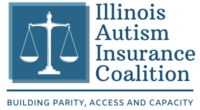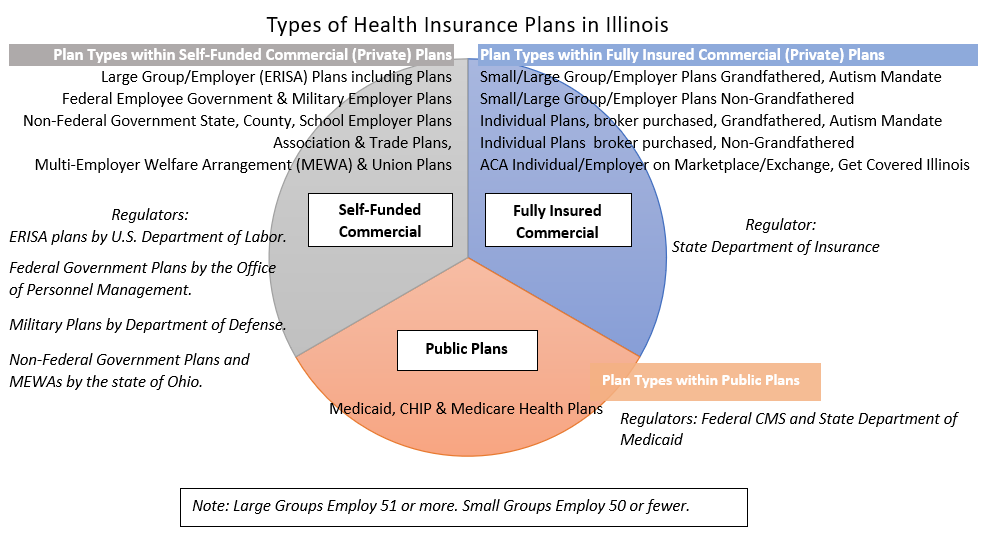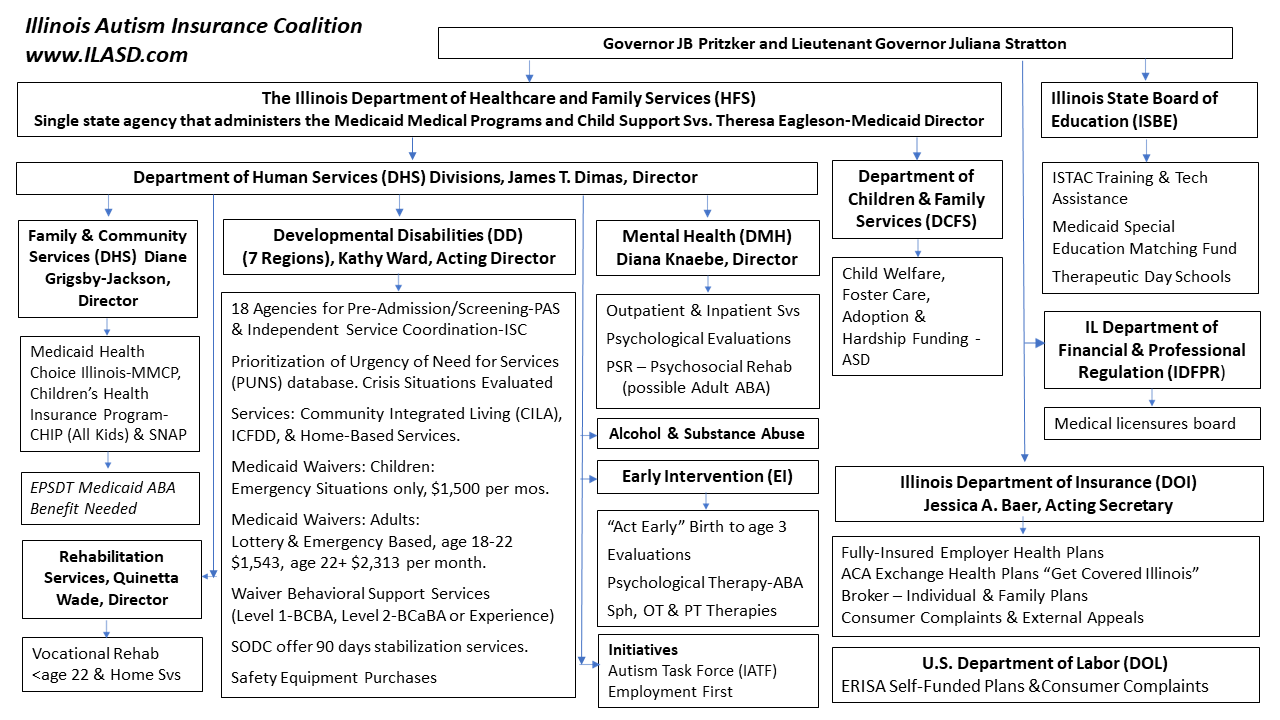Am I Covered
Once you work through the steps below, you will know the type of health plan you are enrolled in. Ask your employer or broker for the plan’s summary plan description (SPD) document which may also be called evidence of coverage. This is a large document and not a simple grid format like the summary of benefits document. Search the SPD document for Autism Spectrum Disorder or Applied Behavior Analysis (ABA) and review the plan’s medical necessity definition, benefits for treatment, or exclusions for ASD and/or ABA.
Please also find below, a pie chart showing the types of health plans found in Illinois.
Step 1: How do I access my health plan?
I am employed by a company,
ask your employer’s benefits department or human resources which one of the three types of health plans below they offer their employees.
Fully-Insured Plans – If a Fully-Insured Health Plan is the type of health plan your employer provides, find out if the plan was authored before the ACA (access to autism mandate benefit) or after the ACA (essential health package benefit).
Self-Funded or ERISA Plans – These plans are not impacted by mandates or state legislation and each company chooses whether or not to provide an ABA benefit. Here is a list of Self-Insured employers covering ABA per State – see pages 6-9 Autism Speaks SELF Funded Tool Kit
ACA Exchange Marketplace Small Business Health Plans “Get Covered Illinois” – These employer health plans have access to autism treatment benefits.
I am a government employee or federal employee,
State, county and municipal employees have access to an autism benefit through their mental health plans called Healthlink or Magellan. Federal & Military employees have ABA benefits in their health plans as well.
I have purchased an Individual or Family Private Plan purchased through a Broker,
ask the broker when the plan was authored: Before the ACA (autism mandate) or after the ACA (essential health package benefit).
I have purchased an Individual or Family health plan on the ACA Exchange,
your plan was authored after the start of the ACA and has an autism benefit in the essential health package benefit.
I have a public health plan such as Medicaid,
access to autism treatments, such as ABA, started in March 2021. However, due to a very narrow approved practitioner type families are finding it very challenging to find providers. See our Medicaid Access page to help give you guidance on the challenges and any advocacy alerts. If you have a Child or Adult Waiver, you have access to Behavior Interventions under the 56U Program which provides behavior consulting without direct treatment staff.
My child is between the ages of 0 and 2 years old
and is diagnosed or suspected to have an Autism Spectrum Disorder or developmental disability. You will want to look at your health plan for benefits and also reach out to Illinois’ Act Early Early Intervention Program.
Step 2: For a visual view, find your type of health plan on the Coalition’s chart below-entitled Types of Health Plans in Illinois.
Click on chart to enlarge.
Step 3: Learn about the Autism Benefits in Illinois
Autism Mandate Benefit in Statue 215: Illinois Autism Mandate Law and Benefit
ACA’s Essential Health Package Benefit for Autism in Illinois provides treatment with no funding caps for individuals ages birth through 20.
Federal Employee Health Plan Information
Visual Organizational Chart – Illinois’ overall structure of support systems
Click on chart to enlarge
WHAT ARE DEDUCTIBLES, CO-PAYS AND CO-INSURANCE?
Deductibles
The amount you owe for health care services your health insurance or plan covers before your health insurance or plan begins to pay.
Co-insurance
Your share of the costs of a covered health care service, calculated as a percent (for example, 20%) of the allowed amount for the service.
Co-payment
A fixed amount (for example, $15) you pay for a covered health care service, usually when you receive the service.
Check out this easy to read source on these cost and other medical terms.
CHALLENGES AFFORDING OUT OF POCKET HEATH COST
The percentage of persons under age 65 who were in families having problems paying medical bills decreased, from 21.3% (56.5 million) in 2011 to 16.0% (43.3 million) in the first 6 months of 2017.
The percentage of children aged 0–17 years who were in families having problems paying medical bills decreased, from 23.2% in 2011 to 17.1% in the first 6 months of 2017.
In the first 6 months of 2017, 24.4% of poor, 24.8% of near- poor, and 12.2% of not-poor persons under age 65 were in families having problems paying medical bills in the past 12 months.
Problems Paying Medical Bills Among Persons Under Age 65, National Health Interview Survey, 2011–June 2017, December 2017, Link to full article
Check out our page about Finding Financial Supports for Co-Pays


